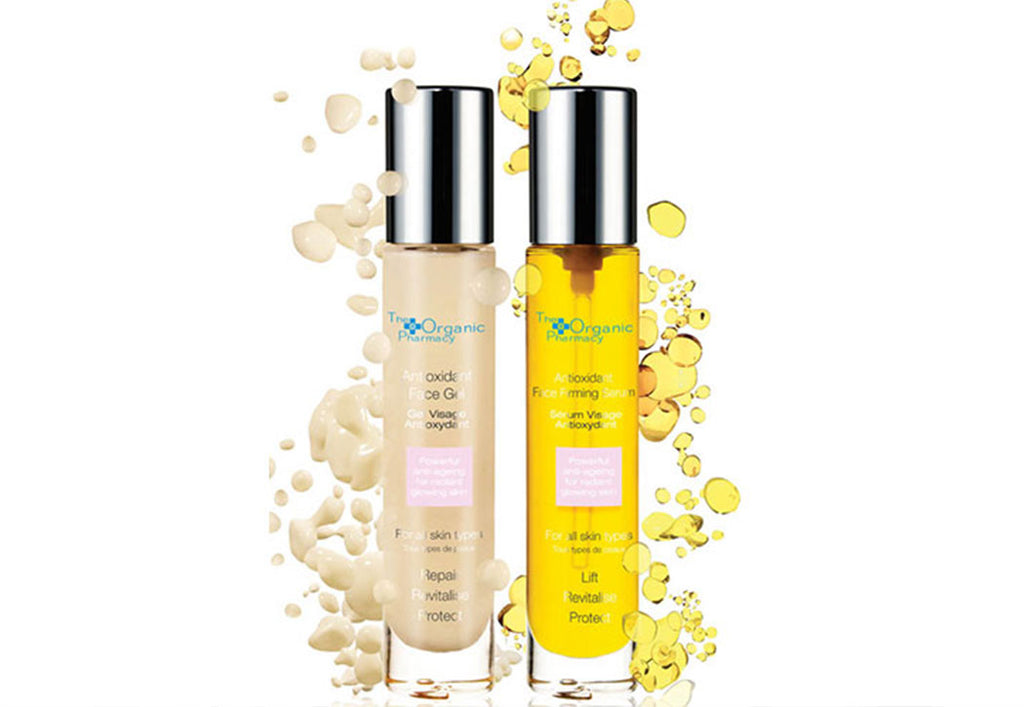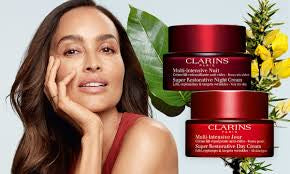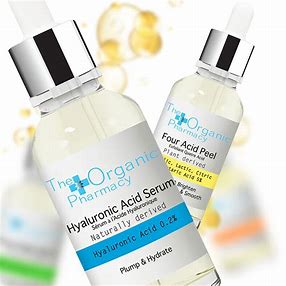How getting our skincare on point can help us to feel a little bit more ‘Meno-poised’
Perimenopause and menopause are massive life events for women. Seen as a taboo until very recently, discussions and awareness are thankfully welcomed more now than they have ever been. Yet these changes are still misunderstood, misdiagnosed and sometimes ignored. I am a Menopause Coach and my aim is to pass on some sound advice. If you are suffering right now or think you are at the beginning of this journey I want to empower you to recognise what is happening within your own bodies. Providing some confidence to seek help from your GP or a health specialist. Plus if you are reading this but not affected by the menopause personally I hope to arm you with some useful knowledge to be able to understand and support others around you.
In this article I’m going to talk about the difference between perimenopause and menopause. I’ll also discuss some of the changes we may experience in our skin and what we can do to alleviate these.
Almost every women will go through these changes which arecaused by long term hormone deficiencies. Ultimately, it’s when we stop having periods because our ovaries stop producing eggs and, as a consequence, our hormone levels of oestrogen and progesterone fall. But this is generally not a smooth transition because our hormones fluctuate rather than fall steadily causing all sorts of issues. It’s really important to say that we must recognise it’s not just women in their forties and fifties that will experience this. Those who are non-binarythat were female at birth, trans men who haven’t gone through gender re-assignment surgery, anyone who has had a hysterectomy (uterus removal) and/or oophorectomy (ovary removal) and in rare cases teenagers and even children can also experience these symptoms.
Research has shown that one third of perimenopausal and menopausal women in the UK wait at least a year to receive treatment for their symptoms and for one in ten it takes more than nine doctor appointments to make a diagnosis. This is all whilst experiencing a multitude of symptoms which can cause real suffering. Physical and mental health can decline during this time. We shouldn’t have to endure these changes just because it’s a ‘natural’ process that women go through. Withthe appropriate treatments and lifestyle changes it can be effectively managed and quality of life can be improved.
What is Perimenopause?
This is when we are experiencing menopausal symptoms due to hormone changes but we still have our periods. Even if these are changing in frequency and nature. The average age to start having perimenopausal symptoms is around forty five. Although everyone’s experience is different. The perimenopause can last for many months or years and can be a rocky road.
What is Menopause?
In Greek it translates as ‘month’ and ‘cease’ and is when wedon’t have a period for twelve consecutive months. The average age of menopause is fifty one and forty nine for BIPOC communities (Black, Indigenous and People of Colour). But again this can be different from woman to woman. Most people concentrate on the menopause but it’s the perimenopause beforehand which can be really disruptive.
What is Post Menopause?
The time in our life after the period of twelve consecutive months with no period.
What part do Oestrogen & Progesterone play?
For many of us the hormones oestrogen and progesterone work in synergy to regulate the menstrual cycle and produce eggs. They are preparing our bodies for possible pregnancy every month and we experience a period when pregnancy doesn’t happen. As we approach menopause our ovaries make fewer of these hormones and our fertility decreases. Once we are post menopause we can’t become pregnant. Testosterone also has an important role to play in growth, bone mass and maintenance of the female sexual anatomy. So can cause problems when it too starts to decline.
Oestrogen is a big player in keeping our whole bodies running smoothly, not just our menstrual cycle. It directly effects our immunity, mood, muscles, hair and skin to name just a few. So when it starts to fluctuate during the perimenopause and menopause this leads to a deficiency resulting in a whole host of symptoms.
What are the symptoms?
There isn’t a test available that can give us a definitive diagnosis. If you are not feeling quite like your normal self, ‘out of sorts’, experiencing symptoms you haven’t noticed before I would suggest keeping a diary of your mental and physical health or better still use a menopause app to track what’s going on. There are nearly forty different symptoms associated with this period in our lives. It’s not just hot flushes and feeling a bit cranky! Below are many of them although this isn’t an exhaustive list:
• Feeling tense/nervous
• Trouble sleeping
• Dizziness/feeling faint
• Loss of interest in sex
• Muscle and joint aches and pains
• Difficulty concentrating
• Irregular periods
• Heart palpitations
• Tiredness/lack of energy
• Crying frequently
• Feeling irritable
• Headaches
• Stress incontinence
• Skin becomes dry and itchy
• Loss of interest in things
• Hot flushes
• Brittle nails
• Numbness in parts of body
• Vaginal dryness
• Osteoporosis
• Feeling unhappy
• Body odour changes
• Bloating
• Night sweats
• Breathing difficulties
• Memory loss
• Mood swings
• Breast soreness
• Changes in body shape and weight gain
• Recurrent urinary tract infections
• Digestive problems
• Hair loss
• Tinnitus
If you are experiencing any of these symptoms, keep a note of them and read what you can from reliable sources. Make an appointment to see your GP or a health professional armed with your evidence and knowledge.
How does the perimenopause and menopause affect our skin?
Many of us will see the biggest changes to our skin during this time. It may feel tighter, drier, itchier and rougher with a dull appearance. Rosacea and broken capillaries may develop. Fine lines will seem more prominent. We may even see a return of acne or experience it for the first time. Much of this isn’t exclusive to the skin on our face either, changes happen to the skin all over our body.
So why does this happen? Most of the cells in our skin have oestrogen receptors. Oestrogen has four key functions within our skin which, when depleting, will cause changes:
1.Oestrogen produces hyaluronic acid
This is a gel like substance produced just below the skins surface. It’s a natural hydrator and is able to retain water so it’s a real skin superhero. It gives the skin fullness, reducing fine lines and dryness. But as oestrogen declines, so does the production of hyaluronic acid. Therefore our skin finds it harder to retain moisture leaving it dry, dull and scaly. The natural shedding of dry dead skin cells slows right down too. The radiant glow we maybe once had seems to fade away. When skin cells don’t shed effectively skincare products that are applied cannot penetrate effectively and do their job.
Oestrogen stimulates the sebaceous glands
Therefore sebum (oil) is produced to keep the skin nourished and smooth. When this depletes skin becomes drier, scaly and rougher.
Oestrogen also builds collagen
This is a connective tissue that gives skin its strength and structure. When they decrease, stiffen and break apart this results in deeper lines, sagginess and loss of tone.
Oestrogen produces ceramides
Ceramides are a lipid that binds the top layers of the skin together so that it can retain water and protect from irritants.When these decrease the skin finds it harder to hold on to water. Again resulting in drier skin which can become sensitised due to its protective layer being compromised.
It’s been found that oestrogen levels start to decrease in the skin up to ten years before we are fully menopausal. So these symptoms of decreasing moisture and changes to the structure of the skin can creep up on us over a period of time. Testosterone can also wreak havoc by producing excess sebum which can lead to an oilier skin, blemishes and blocked pores. We can also see an increase in facial hair too. The rate in which our skin cells renew slows down massively. But help is at hand, we can tweak our current skincare routines to seepositive results.
What can I do to improve the health of my skin?
There are lots of small changes we can make to see and feel a difference in our skin. Healthy radiant skin is possible whatever our age and no matter what treatment for perimenopause and menopause we decide to take.
Start with reviewing your current skincare routine
Focus on the basics, don’t have an over complicated regime. Choose products that are gentle, nourishing and hydrating by looking for ingredients such as hyaluronic acid, ceramides and squalene to support the skins natural barrier and moisture. Peptides and retinoids are collagen boosting ingredients and will help to combat loss of firmness and fine lines. Treat skin as ‘maturing’ skin and try to see this as a positive because it is. We are lucky to see our skin change and develop with age, even if it doesn’t seem like it at times.
Choose gentle cleansers such as balms, oils and milks which won’t strip the skin.
Always keep a facial mist to hand. These are wonderful hydrating sprays that you can use any time of day or night.
Opt for serums that contain vitamin C to brighten the complexion and hyaluronic acid to hydrate.
Use a gentle exfoliator to remove dry dead skin cells and encourage new cells to form.
Try not to over use acids and peels such as glycolic or lactic acid. They still have a place in many skincare routines to exfoliate, brighten and stimulate the skin but pare back a little.
Retinoids (vitamin A) are an incredible addition to an evening routine but if you haven’t used them before introduce themgradually. They can make a real difference to the appearance and texture of the skin.
Moisturise with a cream suitable for your skin. Don’t feel you have to use a super rich formulation if your skin isn’t particularly dry. There are lots of different textures to choose from for this age group.
Sunscreen should be a daily staple, even in the winter, and especially after applying retinoid the night before.
Don’t overload the skin with too many thick rich products. Be mindful of how your skin looks and feels and if it needs more product you can apply it. I always suggest cleansing the face and applying your evening routine products several hours before bed. This way you can then see and feel if you face needs more moisture just before going to bed.
Treat the skin on your body much the same as the skin on your face. You may be experiencing dry, dehydrated, rough, itchy skin as hormone levels fluctuate. Use a gentle shower gel and moisturise daily. Use a gentle body exfoliator once or twice a week to remove dry dead skin cells. You don’t need to use harsh scrubs as this might make the situation worse. Many body care products contain ingredients such as hyaluronic acid and ceramides etc. So keep your eyes peeled for these if you have particularly dry skin.
Ultimately concentrate on feeding and nourishing the skin. Think of your new skincare routine as a real act of kindness to yourself.
And also think about:
Feeding the skin from the inside
Keeping hydrated with drinking water, feeding our body nutritious gut friendly food and reducing our sugar intake will not only benefit our skin but all systems of the body. A good quality Omega 3 supplement can make a positive impact.Omega 3 are a crucial component of the lipid membrane of skin cells. So this is also a good place to start feeding the skin from the inside out. Check with your GP before taking if you have any concerns.
Breakouts
Don’t treat the skin harshly if you experience spots and blackheads. There is no need to try to strip the skin of oil. This will only create further problems. Treat the area where the spots are rather than the whole face.
Moles
Keep a check on moles as it’s more common to find pre-cancerous and cancerous changes at this time.
Bruises
We are more prone to bruising due to the falling levels of oestrogen but also simply because the skin is thinner.
Healing
Our skin is slower to repair and heal as we get older. We don’t have as many growth factors and stem cells to regenerate.
Stress
The route of all evil. If we are able to reduce stress in our lives this will have a positive impact on our perimenopause and menopause experience including what happens with our skin.
Below are some handpicked products stocked at Perfumery & Company which are perfect for perimenopausal and menopausal skin. However, they do stock many more items suitable for maturing and hormonal skin so do check out their website or pop in if you are local to them:
Clarins Super Restorative range
This range has been specifically designed for menopausal skin. Like a comfort blanket for the face. The day and night creams have been formulated to our specific needs at these different times of the day, protecting the skins barrier during the day and reactivating the skin cells at night. Containing organic harungana extract which is a tree sap with healing, soothing and revitalising properties. It’s known as one of nature’s retinols so is ideal for skin of this age. This range offers face creams for different skin types. I have been trialling the day and night cream for very dry skin. If your skin isn’t very dry you could opt for the moisturisers for all skin types.
Clarins Super Restorative Day Cream
Suitable for very dry skin (another cream is available in the range for all skin types and has a lighter consistency)
Containing vegetal squalene to rebuild and protect the skin’s natural barrier encouraging a smoother surface texture. What I love about this cream is that even though it’s for a very dry skin it isn’t too rich. It penetrates effectively into the skin so shouldn’t feel too heavy for someone with dry skin. Apply in the morning onto clean skin after serum. Always take the cream down the neck and onto the chest area.
Clarins Super Restorative Night Cream
Suitable for very dry skin (another cream is available in the range for all skin types and has a lighter consistency)
Along with organic harungana this cream contains a vitamin C derivative to brighten and organic sea lily to improveoverall hydration. This is a super nourishing cream for dry to very dry skin. Apply in the evening onto clean skin after serums/oils.
Neals Yard Remedies Women’s balance range
This is a body care range featuring a specific blend of essential oils that smell like a spa in a bottle – Rose Absolut, geranium and frankincense that not only nourish parched skin but are clinically proven to bring about balance and harmony to mind and body. A lovely delicate fragrance. This range has been designed specifically for women’s natural cycles and life stages. They are a joy to use and help to relax and calm.
Women’s Balance Shower Oil
Suitable for all skin types
I love a shower oil and this one is no exception. Macadamia and sea buckthorn cleanse and nourish dry, dehydrated skin perfectly. Whilst the unique blend of essential oils definitely brings some calm and balance. Massage into wet skin and see it transform into a milk to provide hours of moisture.
Women’s Balance Massage Oil
Suitable for all skin types
This is a luxurious massage oil to use after a shower on dry skin. Containing the same incredible essential oil blend apply any time to restore feelings of calm. Warm a few drops in your hands and breath in the aroma. Close your eyes and take three deep breaths before massaging in circular motions all over the body. I like to use this in the morning after my shower as it doesn’t leave skin feeling greasy, it sinks in beautifully. But I’ve also used it at night, specifically to give myself a warming foot massage before bed. Remember to gently exfoliate once or twice a week to ensure the massage oil can penetrate effectively.
Body Cream
Suitable for all skin types
Containing hyaluronic acid to intensely moisturise, this rich body cream feels like a real treat to use and is perfect for dry skin. It will keep your body moisturised for up to twenty four hours. It brings immediate relief and comfort to skin that feels parched and itchy leaving it smooth and moisturised. Containing the same spa like fragrance as the rest of the Women’s Balance range, it has definitely formed part of a relaxing bed time ritual for me.
I really hope to have imparted some useful information about this much misunderstood stage of life and shared a few hints and tips on ways to look after your skin through this time.
Continue reading










